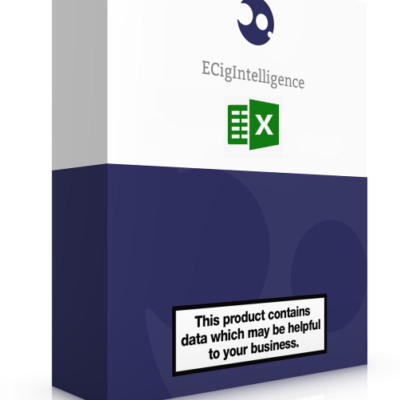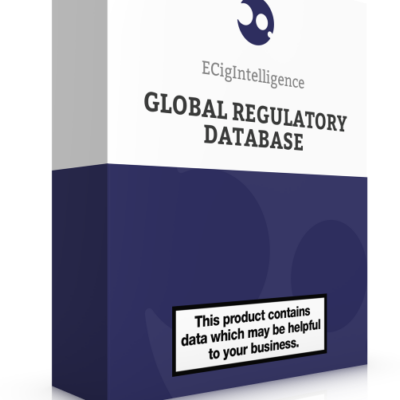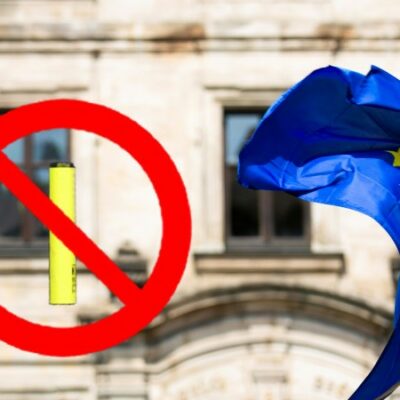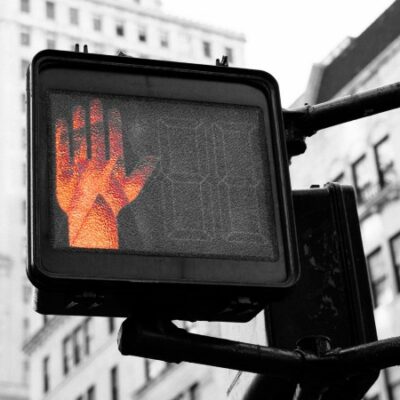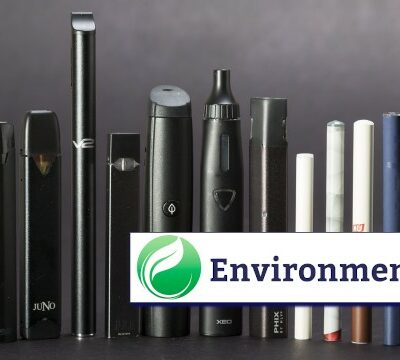 The future of the e-cigarette industry lies in bricks-and-mortar retail sales rather than online, according to Miguel Martin, president of e-cig maker Logic.
The future of the e-cigarette industry lies in bricks-and-mortar retail sales rather than online, according to Miguel Martin, president of e-cig maker Logic.
And reports suggesting a slowdown in sales through mainstream channels such as convenience stores do not necessarily present the full picture, he contends.
Data from Management Science Associates (MSA), which tracks shipments from wholesalers to retailers to provide a broader picture, shows that all e-cigarette core categories are up compared to the same period last year, said Martin.
This is a trend that should continue, he added, speaking in a Wells Fargo Tobacco Talk conference call. He forecast that regulatory pressure, particularly around lax age restriction measures online, would mean that bricks-and-mortar stores are likely to be the default future distribution method for e-cigarettes.
“I believe this will be the long-term play of where e-cigs will be sold, whether through FDA [Food and Drug Administration] regulation or through that of the [state] attorney general’s office.”
Moreover, the attraction between retail outlets such as convenience stores and e-cigarette manufacturers is mutual, Martin added. E-cigarettes are proving to be a lucrative product for retailers, both in themselves and as an incentive to buy other products in the store.
E-cigarettes have a high margin in both percentage and dollar terms, providing valuable return on limited shelf space, Martin said. A comparison can be drawn with energy drinks, where small companies such as Monster and Five Hour have been able to compete with bigger firms such as PepsiCo and Coca-Cola by offering retailers strong margins.
Said Martin: “The question is ‘How much does this slot make for me?’”
Buy, buy, buy
There is also evidence that e-cigarette purchasers come to the checkout with fuller baskets of other goods than tobacco purchasers. MSA data shows that U.S. consumers who visit a convenience store for e-cigarettes tend to spend around $18.13. Of that, $14.08 that comes from e-cigarettes and $4.05 from other products. This compares with combustible cigarettes consumers spending a total of $12.73 in each visit: $10.58 on cigarettes and $2.15 from other products.
There is also still significant room to develop e-cig sales through bricks-and-mortar retail, not only in the high-growth areas of mass merchandisers and wholesale clubs but also in convenience stores.
For example, it is estimated that only around 140,000 retail locations sell e-cigarettes but approximately 325,000 sell conventional tobacco products, according to Bonnie Herzog, managing director of beverage, tobacco and consumer research at Wells Fargo Securities.
As well as expansion in the number of locations selling e-cigarettes, Logic also expects to see retailers start to stock larger numbers of e-cigarette products. There are opportunities for stores not carrying a full range to add items such as rechargeable cartridges, Martin said.
“Anywhere that can responsibly sell cigarettes to adults, there should be e-cigarettes as a category in those stores. These are the gaps you’re going to see be filled in,” he suggested.
The final frontier
However, this is likely to result in greater competition for limited shelf space. A parallel can again be drawn with energy drinks, said Herzog. Convenience stores currently allocate approximately 20% of shelf space in the beverage category to these products, but this is expected to rise to a third over the coming years – resulting in a decline in the space allocated to other drinks such as carbonated beverages.
For e-cigarettes, space could be freed up by the continued decline in conventional cigarette business, and the products may find themselves on shelves previously occupied by tobacco. Dual use of conventional cigarettes and e-cigarettes will also lend itself to this, Martin added.
“A complete category is now needed, with consumers moving between
-

EU restrictions, requirements and sanctions database
$1,995.00 Add to cart -

Global market database
$3,995.00 Add to cart -

Bolivia: e-cigarette regulation
$1,750.00 Add to cart -

Poland: the e-cigarette market
$1,750.00 Add to cart -

Georgia: e-cigarette regulation
$1,750.00 Add to cart -

Latin America: the e-cigarette market
$1,750.00 Add to cart -

Tamarind Intelligence Policy Radar
$3,995.00 Add to cart -

Global regulatory database
$3,995.00 Add to cart -

Israel: e-cigarette regulation
$1,750.00 Add to cart -

Latvia: e-cigarette regulation
$1,750.00 Add to cart -

Canada: e-cigarette regulation
$1,750.00 Add to cart -

Kyrgyzstan: e-cigarette regulation
$1,750.00 Add to cart -

The disposable e-cig ban debate in Europe – can the EC block a national ban?
$2,000.00 Add to cart -

Poland: e-cigarette regulation
$1,750.00 Add to cart -

Kazakhstan: e-cigarette regulation
$1,750.00 Add to cart -

Germany: the e-cigarette market
$1,750.00 Add to cart -
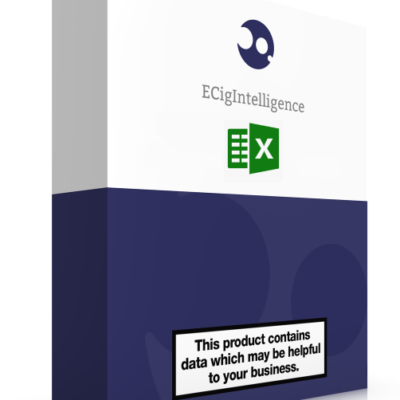
ECigIntelligence disposable e-cigarette bundle
$2,995.00 Add to cart -

An analysis of the import and seizures of illegal e-cigarettes at US ports of entry
$2,000.00 Add to cart -

Australia: e-cigarette regulation
$1,750.00 Add to cart -

US environmental policy proposals that could impact e-cigs
$2,000.00 Add to cart -

ECigIntelligence Hardware Dashboard
$1,995.00 Add to cart -

ECigIntelligence brand and product database
$3,995.00 Add to cart -

United Arab Emirates: e-cigarette regulation
$1,750.00 Add to cart -

Spain: e-cigarette regulation
$1,750.00 Add to cart -

Vietnam: e-cigarette regulation
$1,750.00 Add to cart -

Key arguments and decisions in the Triton/Vapetasia US FDA MDO case
$2,000.00 Add to cart -

Netherlands: e-cigarette regulation
$1,750.00 Add to cart -

Malaysia: e-cigarette regulation
$1,750.00 Add to cart -

US FDA enforcement: an analysis of the warning letters issued in 2023
$2,000.00 Add to cart -

An overview of the judicial challenges to California’s tobacco product flavour ban
$2,000.00 Add to cart -

Armenia: e-cigarette regulation
$1,750.00 Add to cart -

Morocco: e-cigarette regulation
$1,750.00 Add to cart -

Costa Rica: e-cigarette regulation
$1,750.00 Add to cart -

Bahrain: e-cigarette regulation
$1,750.00 Add to cart -

Saudi Arabia: e-cigarette regulation
$1,750.00 Add to cart -

Russia: e-cigarette regulation
$1,750.00 Add to cart -

Chile: e-cigarette regulation
$1,750.00 Add to cart -

Italy: the e-cigarette market
$1,750.00 Add to cart -

EU sustainability proposals: analysis of the most important legal moves of 2023
$2,000.00 Add to cart -

Finland: e-cigarette regulation
$1,750.00 Add to cart -

Italy: e-cigarette regulation
$1,750.00 Add to cart -

An overview of US tribal territories and tobacco policy, with selected case studies
$2,000.00 Add to cart -

Mexico: e-cigarette regulation
$1,750.00 Add to cart -

Argentina: e-cigarette regulation
$1,750.00 Add to cart -

An analysis of US FDA import alerts on e-cigarettes
$2,000.00 Add to cart -

South Africa: e-cigarette regulation
$1,750.00 Add to cart -

Turkey: e-cigarette regulation
$1,750.00 Add to cart -

EU battery regulation: new requirements for portable batteries
$2,000.00 Add to cart -

US FDA enforcement against tobacco retailers: analysis of the HHS report
$2,000.00 Add to cart -

Philippines: e-cigarette regulation
$1,750.00 Add to cart -

Ecuador: e-cigarette regulation
$1,750.00 Add to cart -

Avail Vapor US FDA marketing denial order case: key arguments and decisions
$2,000.00 Add to cart -

Lithuania: e-cigarette regulation
$1,750.00 Add to cart -

Hungary: e-cigarette regulation
$1,750.00 Add to cart -

Ireland: e-cigarette regulation
$1,750.00 Add to cart -

France: the e-cigarette market
$1,750.00 Add to cart -

E-cigarette companies’ court actions against the US FDA – Critical arguments and decisions
$2,000.00 Add to cart -

Egypt: e-cigarette regulation
$1,750.00 Add to cart -

New Zealand: e-cigarette regulation
$1,750.00 Add to cart -

US FDA under scrutiny – Latest reports on PMTA progress
$2,000.00 Add to cart -

China: the e-cigarette market
$1,750.00 Add to cart -

Trademarks and patents – Intellectual property requirements in the US
$2,000.00 Add to cart -

Slovakia: e-cigarette regulation
$1,750.00 Add to cart -

Disposable e-cigarettes in the US, state-by-state look at proposed bills
$2,000.00 Add to cart -

Tunisia: e-cigarette regulation
$1,750.00 Add to cart -

Norway: e-cigarette regulation
$1,750.00 Add to cart -

Are eco-friendly products compliant with new and upcoming EU regulation?
$2,000.00 Add to cart -

Greece: e-cigarette regulation
$1,750.00 Add to cart -

Colombia: e-cigarette regulation
$1,750.00 Add to cart -

Guatemala: e-cigarette regulation
$1,750.00 Add to cart -

The top changes that matter in this month’s Policy Radar update
$2,000.00 Add to cart -

Romania: e-cigarette regulation
$1,750.00 Add to cart -

Belarus: e-cigarette regulation
$1,750.00 Add to cart -

Kuwait: e-cigarette regulation
$1,750.00 Add to cart -

Regulatory landscape of disposable e-cigarettes in the US: The new loophole?
$2,000.00 Add to cart -

Switzerland: e-cigarette regulation
$1,750.00 Add to cart -

South Korea: the e-cigarette market
$1,750.00 Add to cart -

Slovenia: e-cigarette regulation
$1,750.00 Add to cart -

Uzbekistan: e-cigarette regulation
$1,750.00 Add to cart -

Indonesia: the e-cigarette market
$1,750.00 Add to cart -


Russia: e-cigarette regulation
$1,750.00 Add to cart -


Dominican Republic: e-cigarette regulation
$1,750.00 Add to cart -


Georgia: e-cigarette regulation
$1,750.00 Add to cart -


Intellectual property and trademark lawsuits in the US
$2,000.00 Add to cart -


The US FDA’s PMTA internal review process – a de facto ban on flavours?
$2,000.00 Add to cart -



Canada: the e-cigarette market
$1,750.00 Add to cart -


Austria: e-cigarette regulation
$1,750.00 Add to cart -


US: waste management of e-cigarettes
$2,000.00 Add to cart -


Belgium: e-cigarette regulation
$1,750.00 Add to cart -


A journey analysis of vaping and nicotine pouch usage – a UK/US comparison
$2,000.00 Add to cart -


Cyprus: e-cigarette regulation
$1,750.00 Add to cart -


Jordan: e-cigarette regulation
$1,750.00 Add to cart -


Ukraine: e-cigarette regulation
$1,750.00 Add to cart -


Germany: e-cigarette regulation
$1,750.00 Add to cart -


Analysis of US nonprofit organisations’ influence on the tobacco and vaping industry
$2,000.00 Add to cart -


An analysis of the possible legal risks for disposable vapes in the EU
$2,000.00 Add to cart -


Portugal: e-cigarette regulation
$1,750.00 Add to cart -


Malta: e-cigarette regulation
$1,750.00 Add to cart -


Andorra: e-cigarette regulation
$1,750.00 Add to cart -


Bulgaria: e-cigarette regulation
$1,750.00 Add to cart -


US consumer survey – a journey analysis of tobacco alternative usage
$2,000.00 Add to cart -


US vape store survey 2022: pessimism, PMTAs and product diversification
$1,750.00 Add to cart -


Algeria: e-cigarette regulation
$1,750.00 Add to cart -


E-cigarettes’ importation and exportation in the US
$1,750.00 Add to cart -


Denmark: e-cigarette regulation
$1,750.00 Add to cart -


Netherlands: e-cigarette regulation
$1,750.00 Add to cart -


E-cigarette regulatory trends across the US – comparing geographical areas
$1,950.00 Add to cart -


United Arab Emirates (UAE) e-cigarette regulation
$1,750.00 Add to cart -


Indonesia: e-cigarette regulation
$1,750.00 Add to cart -


Poland: the e-cigarette market
$1,750.00 Add to cart -


The UAE and Saudi Arabia: a comparison of the e-cigarette market
$1,750.00 Add to cart -


Philippines: e-cigarette regulation
$1,750.00 Add to cart -


Lebanon: e-cigarette regulation
$1,750.00 Add to cart -


Australia: e-cigarette regulation
$1,750.00 Add to cart -


UK: consumer survey – vaping and nicotine pouch usage
$1,750.00 Add to cart -


Regulatory report: PMTA-MRTP and SE: the main pathways to market for tobacco products in the US
$1,750.00 Add to cart -


China: e-cigarette regulation
$1,750.00 Add to cart -


Japan: the e-cigarette market
$1,750.00 Add to cart -


Sweden: e-cigarette regulation
$1,750.00 Add to cart -


Czech Republic: e-cigarette regulation
$1,750.00 Add to cart -


Market report: the US e-cigarette market consumer survey
$1,750.00 Add to cart -


Spain: e-cigarette regulation
$1,750.00 Add to cart -


Canada: the e-cigarette market – vape store survey report
$1,750.00 Add to cart -


Regulatory report: Israel’s political climate means regulatory changes are unlikely for e-cigarettes
$1,750.00 Add to cart -


Market report: the increase in disposable e-cigs boosts the German market after a few difficult years
$1,750.00 Add to cart -


Regulatory report: sustainability policy proposals affecting the e-cigarette sector in the EU
$1,750.00 Add to cart -


Market report: e-cig and vaping products see steep price increase in Russia due to Ukraine conflict
$1,750.00 Add to cart -


Regulatory report: France remains cautious about the reduced risks of e-cigs
$1,750.00 Add to cart
Logic itself is driven by a long-term strategy of focusing on bricks-and-mortar stores instead of online sales. According to the latest Nielsen data for convenience stores, Logic has now become the number one U.S. e-cigarette brand sold through that channel in terms of unit share, at 24.3%. In terms of dollars, it is second behind Lorillard’s Blu, at 22.9%.
What This Means: These are interesting ideas from a company that has gambled heavily on conventional retail instead of online. After all, many other regulated products – tobacco and alcohol, for example – maintain a far larger presence offline than on, and the need for age verification is one reason for that.
However, that does not mean e-cigarettes will necessarily follow. As a new technology that did not exist before the Internet, they are tied into a more technological space. Differentials in tax rates may encourage online shopping, and some alcohol retailers have overcome the problem of age verification.
Equally, as well as strengths in the online model, there are also weaknesses in bricks-and-mortar as a channel for e-cigarettes.
Stores where e-cigs are only a small part of the stock may well find it difficult to cater to the great diversity of tastes among vapers; and the shift in the U.S. market toward tank systems, which can need much more consideration and explanation before purchase than cigalikes, is not favourable to non-specialist retailers.
For now, the channels are most likely to continue co-existing, but increasingly sell different types of products in different ways.
– Freddie Dawson ECigIntelligence staff
Photo: Marc Falardeau

